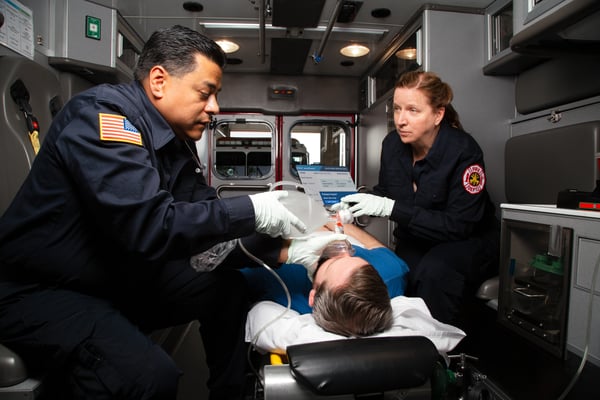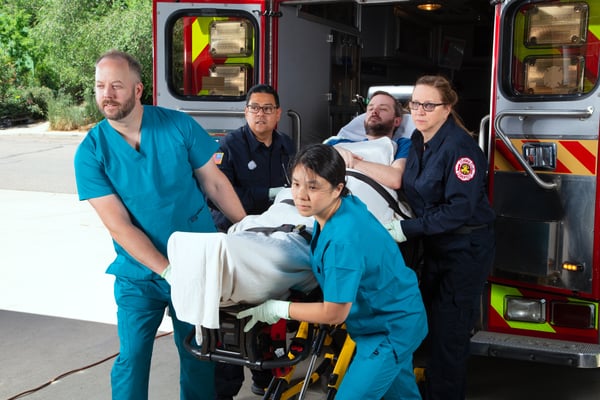News Alert: New ePCR Integration Simplifies EMS Data Management and Enables Better Care Coordination
EMS-to-Hospital Handoffs Can Be a More Streamlined Experience
The transfer of care from emergency medical service (EMS) to the hospital emergency departments (ED) is often a chaotic process

The transfer of care from emergency medical service (EMS) to the hospital emergency departments (ED) is often a chaotic process.i Some of the issues that can negatively impact transfer quality include, but are not limited to:
- Verbal or otherwise manual relay of patient information without a record of clinical assessments, exams, or vital signs, among other critical data points
- Medical errors further down the continuum of care (e.g., misdiagnoses or delayed treatment that threatens patient safety and overall outcomes) caused by a lack of data during the initial handoff
- Staffing shortages that contribute to low-quality patient information being passed on to EDs during acute care transfers
Poor handoffs can have major implications for the hospital and for providers throughout the continuum of care, including adding unnecessary costs, creating stressful environments, and adversely affecting reimbursement. Therefore, improving transfers through better integration of pre-hospital and hospital data is imperative.
Fortunately, technology that promotes data interoperability can be implemented to help overcome common transfer hurdles. By connecting electronical medical record (EMR) software connected to an automated, bi-directional data exchange platform, pre-hospital EMS data can be seamlessly integrated into the patient’s hospital record at the point of transfer and made available to providers and other stakeholders throughout the continuum of care.
Beyond improving transfer of care, hospitals can reap the benefits of the numerous other clinical, operational, and financial enhancements afforded by pre-hospital/hospital data interoperability. Bi-directional data exchange platforms can help improve patient outcomes while giving hospitals the advantages of time savings, improved resource management, and less administrative strain overall.
To learn more about optimizing EMS-Hospital coordination of care, read the full article, “How Emergency Departments Can Improve Acute Care Transfer Performance Through Data Interoperability.”
Read More About Data Interoperability
Data Sharing Myth: HIPAA Prevents Bi-directional Health Information Exchange
iJensen, SM; Lippert, A; Østergaard, D. “Handover of patients: a topical review of ambulance crew to emergency department handover.” NIH National Library of Medicine website, 2013, May 3. https://pubmed.ncbi.nlm.nih.gov/23639134/ Accessed 11 Dec. 2023.
Related Posts
Hospitals: Here’s How To Build Partnership With EMS and Improve Performance
How STAT MedEvac Connected Device, Software, and Data Technology To Enhance QA and Elevate Care
ZOLL Pulse Blog
Subscribe to our blog and receive quality content that makes your job as an EMS & fire, hospital, or AR professional easier.
ZOLL Pulse Blog
Subscribe to our blog and receive quality content that makes your job as an EMS, fire, hospital, or AR professional easier.




